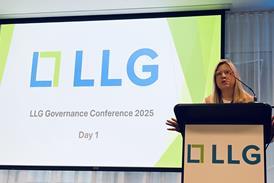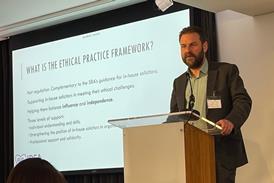There is never a dull moment in the collective actions sphere. Last month, the Competition Appeal Tribunal granted collective proceedings orders (CPOs) for two big opt-out cases being brought against Amazon.

Robert Hammond v Amazon.com, Inc. & Others and Professor Andreas Stephan v Amazon.com Inc. & Others [2025] CAT 42; 24/07/2025, two cases heard together, allege Amazon abused its market position in the way products were selected to be featured in its ‘Buy Box’. The Buy Box displays products more prominently and enables them to be bought with a single click. More than 75% of purchases on the UK Amazon marketplace are made via Buy Box. The Hammond claim, valued at up to £1.3bn, is on behalf of consumers, while the Stephan action, valued at £2.6bn, is for retailers.
Last month’s CPO ruling dealt with, among other things, a challenge by Amazon to the funding arrangements of the two claims. Here the CAT made some interesting points. The first related to the control of legal costs. In both claims, the CAT beefed up the proposed class representative (PCR)’s grip on lawyers’ fees by imposing a requirement that, for the CPOs to be granted, both class representatives must appoint independent costs specialists to help scrutinise lawyers’ bills. In the case of Stephan, the litigation funding agreement (LFA) already provided that Professor Stephan would ‘review’ lawyers’ invoices before submitting them to the funder for payment; and at the ‘reasonable request’ of the funder, he should seek to have those fees assessed.
But the CAT did not feel this was strong enough. It noted that the funder’s interests are ‘not identical’ to those of the class, because ‘if the action results in recovery for the class, the funder’s expenditure on costs will be reimbursed out of the sum recovered, potentially at the expense of the class’. It added that it was ‘no disrespect to Professor Stephan to say that for litigation of this scale, we do not think he is in a position effectively to review and challenge bills for legal costs without assistance’.
Read more by Rachel Rothwell
The CAT made clear that the practice of instructing a costs specialist to advise the PCR on legal fees, and ‘to provide assistance in approving any costs arrangements and fees’, should now become the ‘standard approach’ in collective proceedings. This is undoubtedly good news for costs lawyers, who will be only too pleased to step into the role of guardian of the legal budget. But it will be a quiet blow for lawyers, who will find the detail of their billing scrutinised under a far sharper lens than previously.

The second interesting aspect of the CAT’s recent ruling relates to the funder’s fees. In Hammond, Amazon challenged the funder’s remuneration package, arguing that the funder could end up with ‘very substantial sums’, much higher than those allowed in other cases; and these were ‘further inflated’ because they were based on funds committed rather than actually drawn down. The tribunal noted that the structure of the funder’s fee meant it would vary considerably over time. Hammond estimated the range to be between 3.02x and 7.74x, while Amazon’s estimate was much higher, and it argued that in some scenarios the funder’s fee could be ‘wildly excessive’ and ‘indefensibly high’.
Clearly the question of what level of return the tribunal will consider reasonable is of vital importance to the funder. But the CAT was in no hurry to comment on this, preferring to leave it for ‘more detailed consideration at a later time’. Justifying its reasons for kicking that rather awkward can down the road, the CAT pointed out that it may have access to far more material after settlement or judgment. This could, for example, concern the funder’s risk assessment or negotiations between the funder, class representative and lawyers, all of which would currently be privileged. The other key component that the tribunal would have after judgment, of course, is the power of hindsight. This is something a funder clearly does not have when negotiating its return.
However, the CAT was careful to spell out that just because it had not, at this stage, rejected the funder’s return as excessive, this should not ‘in any way’ be taken as an indication that the CAT approved the fee in Hammond. It added: ‘We do find that it could potentially result in an exceptionally high return’. Meanwhile, the CAT also cited the recent ruling in Merricks v Mastercard as demonstrating how it may use its discretion to allow the funder ‘considerably less’ than had been provided for in the LFA ‘where the proceedings had a very poor result’.
So it seems the CAT is giving itself plenty of leeway to slash funders’ fees at the end of a case, without feeling obliged to make any meaningful comment on them before then. This approach may work fine for now, protecting class members from sacrificing too much of a damages award to be used towards funders’ fees. But from a funder’s perspective, knowing that whatever fee arrangements they carefully negotiate with lawyers and class representatives can simply be torn up by the CAT once judgment has finally been given is a distinct downside to investing in this regime. If the CAT fails to tread the right balance when assessing funders’ returns, will funding still be available to support collective actions in the future?
Rachel Rothwell is editor of Gazette sister magazine Litigation Funding, the essential guide to finance and costs.
For subscription details, tel: 020 8049 3890, or visit Litigation Funding































No comments yet